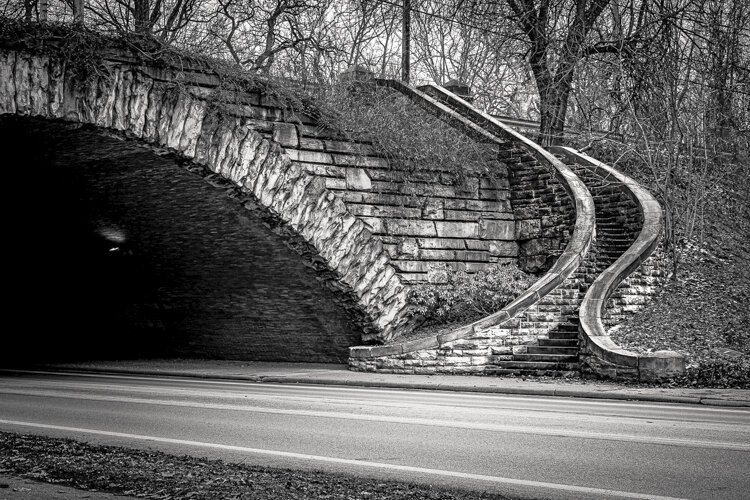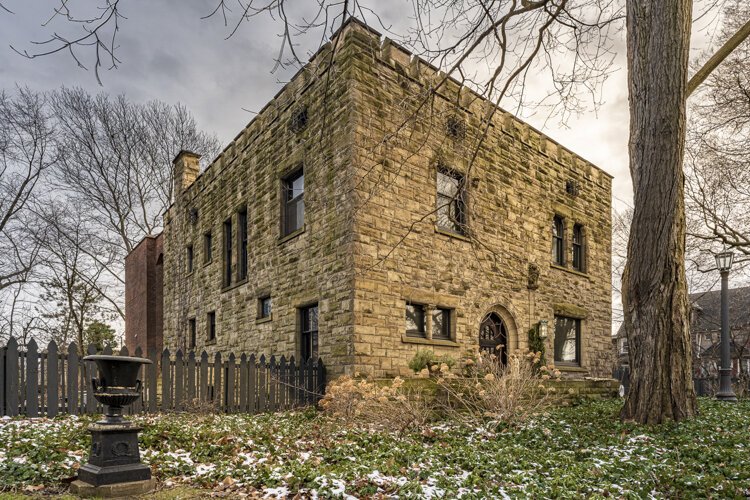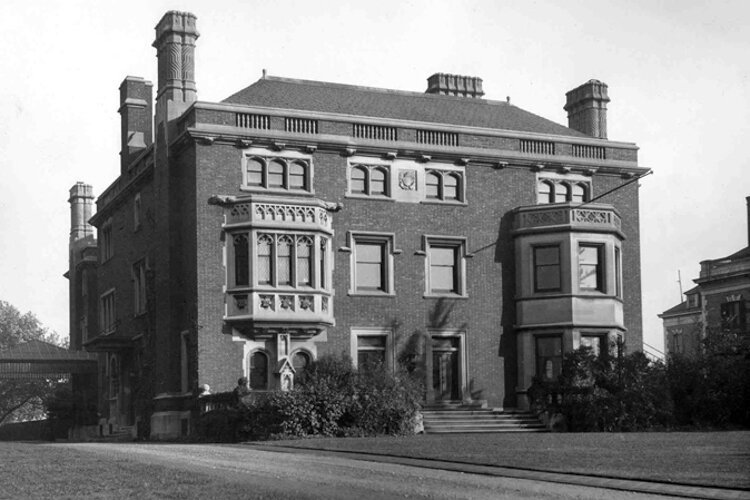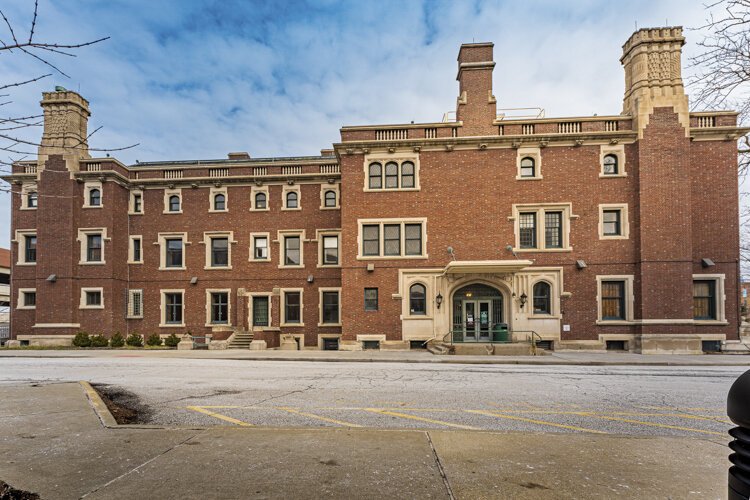Body of Work: AIA lecture celebrates Schweinfurth’s architectural legacy
By Angelina Bair and Tom Matowitz
The American Institute of Architects Cleveland (AIA Cleveland) programming and historic resources committees in April hosted its 2025 installment of its Body of Work lecture series— “celebrating design in its purest form, featuring historic and contemporary architects who shape the built environment with beauty, intention, and innovation,” according to the AIA Cleveland web site.
One lecture in the Body of Work series focuses on a historic architect who practiced in Cleveland. That architect’s body of work is presented by a historian “embodying the architect’s voice as much as possible.”
That architect is Charles Schweinfurth, known for catering to Cleveland’s “carriage trade,” building homes along Millionaires’ Row on Euclid Avenue, and several area churches. His buildings tended to be massively built stone structures, seemingly built for the ages.
The 2025 Body of Work series launched with a lecture on Schweinfurth Thursday, April 24, at Trinity Episcopal Church Cathedral—one of Schweinfurth’s most notable designs.
Anthony Hiti, principal with the architecture firm Hiti, DiFrancesco and Siebold and author of the 2013 book, “Charles F. Schweinfurth (1856-1919): Uncompromising Architect of Cleveland's Valiant Age,” presented the lecture to a packed audience—discussing his architectural legacy, his personal life, and the Charles Schweinfurth Architectural Collection housed at Cleveland Public Library.
Prior to the lecture, attendees were able to view Schweinfurth’s original hand-drawn blueprints of Trinity Cathedral and watch a slideshow of the completed designs in the cathedral. The lecture concluded with a Q&A session and a discussion on the future adaptive reuse of the Cathedral House Church, today known as Mather Hall at Cleveland State University.Trinity Cathedral is on the National Registry of Historic Places and is a designated Cleveland Landmark. The Cathedral was built in the English Perpendicular Gothic style built between 1901 and 1907.
Schweinfurth also designed Calvary Church and designed more than 103 buildings in Cleveland between 1880 and 1910, 66 of which have been demolished.
The architect’s legacy
Schweinfurth (1857-1919) was one of the most influential Cleveland architects of his era. Coming to Cleveland in the early 1880s, he designed more mansions on Euclid Avenue than any other architect, as well as designing many Cleveland churches and municipal buildings.
One of Schweinfurth’s notable structures was the 1894 Telephone Company building on Champlain Street—the final building destroyed to make way for the Terminal Tower.
In addition to Trinity Episcopal Cathedral, surviving examples of Schweinfurth’s local work include the four sandstone bridges in Rockefeller Park that cross Martin Luther King Boulevard, and the Samuel Mather Mansion on Euclid Avenue.
 Schweinfurth designed the extraordinary group of bridges crossing Martin Luther King Boulevard.His buildings tended to be massively built stone structures, seemingly built for the ages.
Schweinfurth designed the extraordinary group of bridges crossing Martin Luther King Boulevard.His buildings tended to be massively built stone structures, seemingly built for the ages.
Regrettably, their survival rate has been low.
Fortunately, a large archive remains behind in terms of plans, drawings and his personal library gifted to Western Reserve University after his death.
Schweinfurth was one of three brothers who became architects. Upon his death in 1919, his body was returned to his childhood home in Auburn N.Y. for burial.
His former residence on East 75th St. still stands as a reminder of his high standards as a designer.
Future 2025 Body of Work lectures have not been announced by AIA Cleveland.
About the Author: Tom Matowitz
Recently retired after a 37-year career teaching public speaking, Tom Matowitz has had a lifelong interest in local and regional history. Working as a freelance author for the past 20 years he has written a number of books and articles about Cleveland’s past. He has a particular interest in the area’s rich architectural history.






